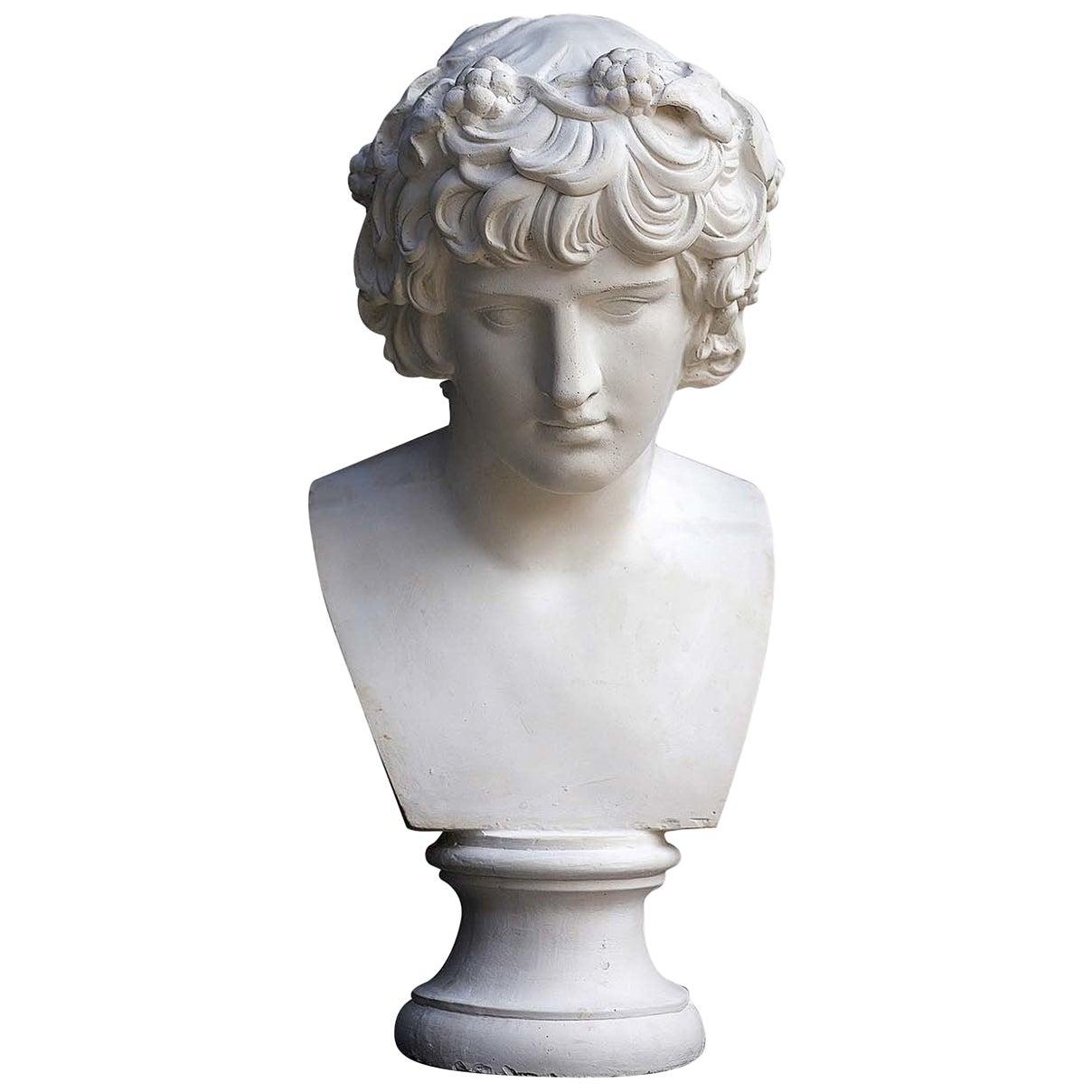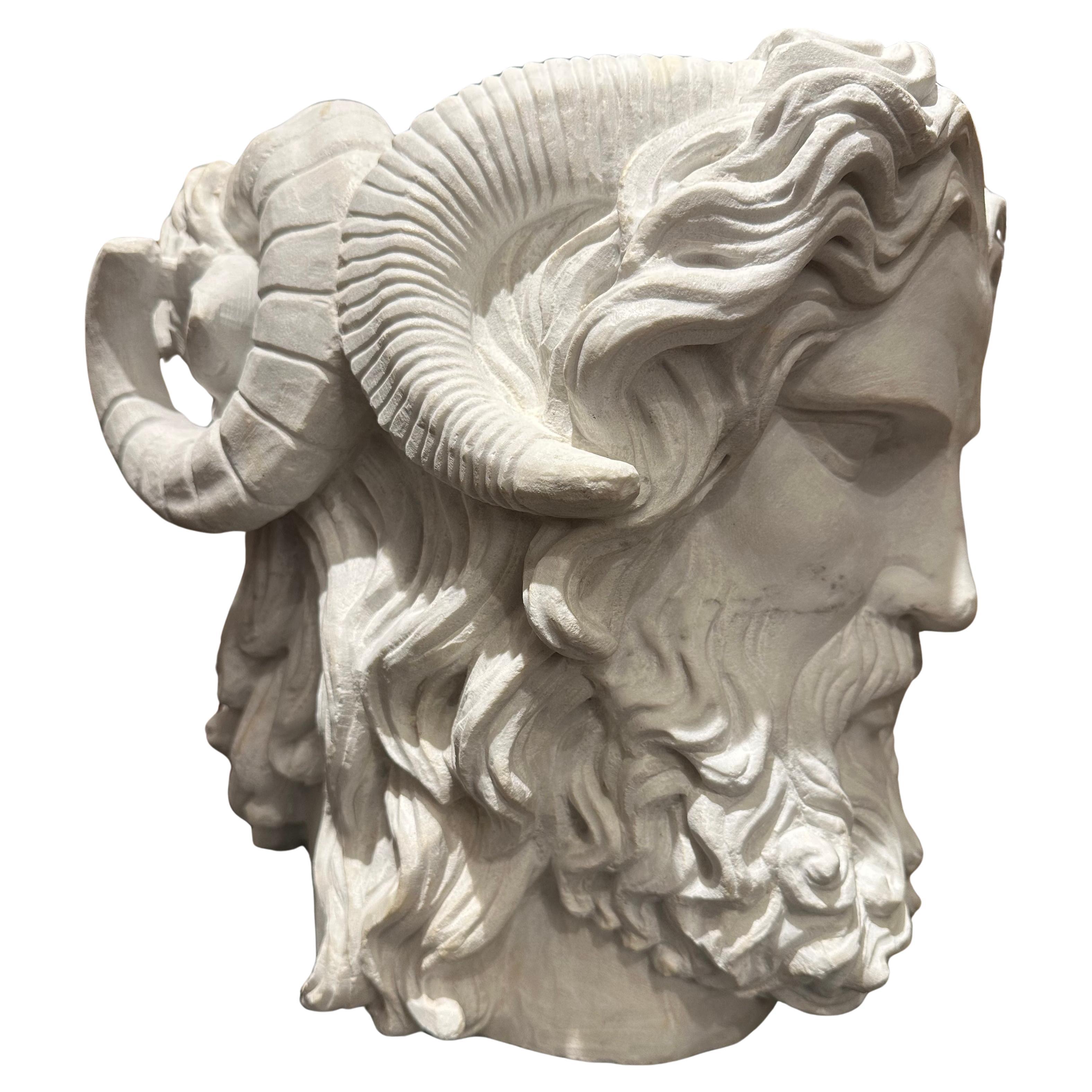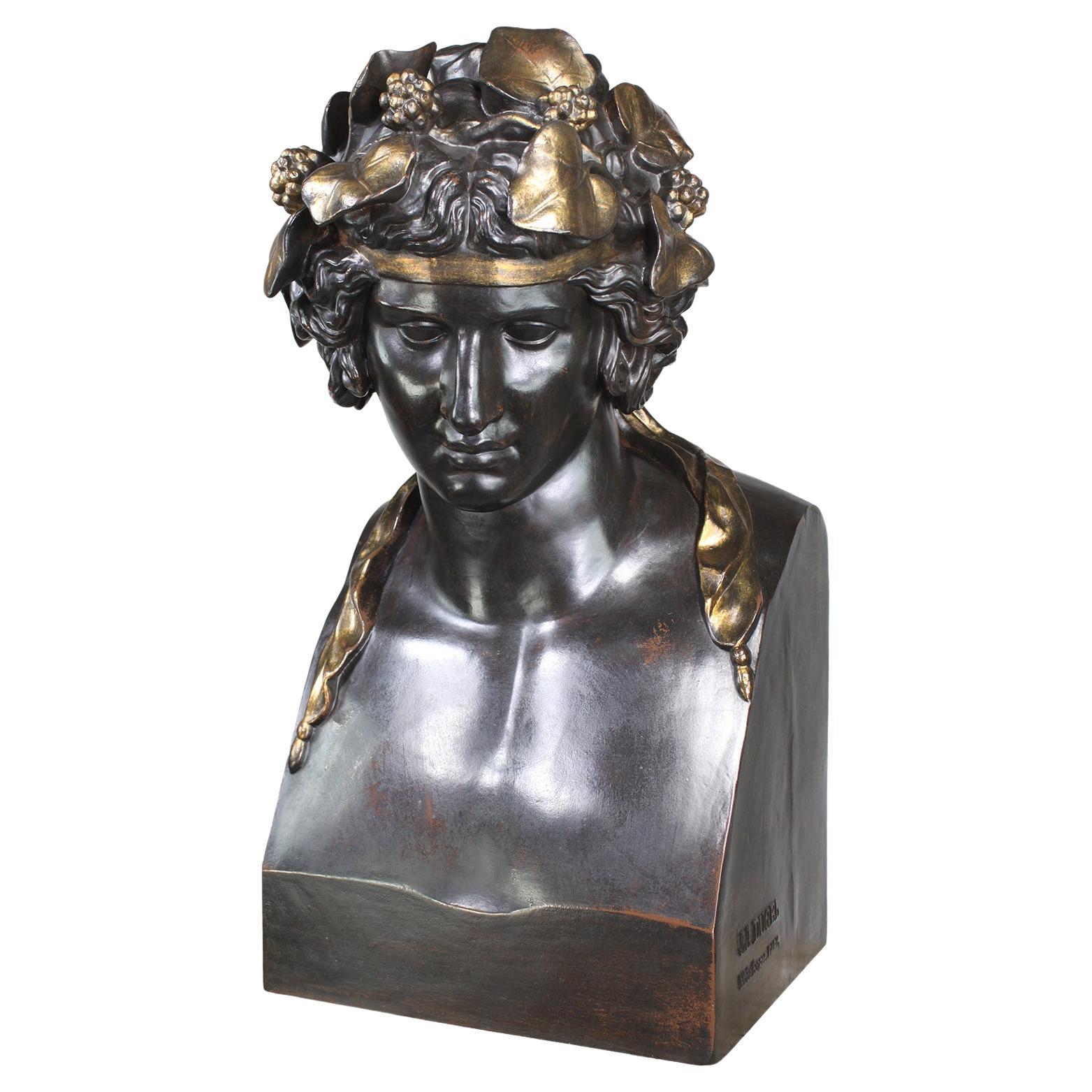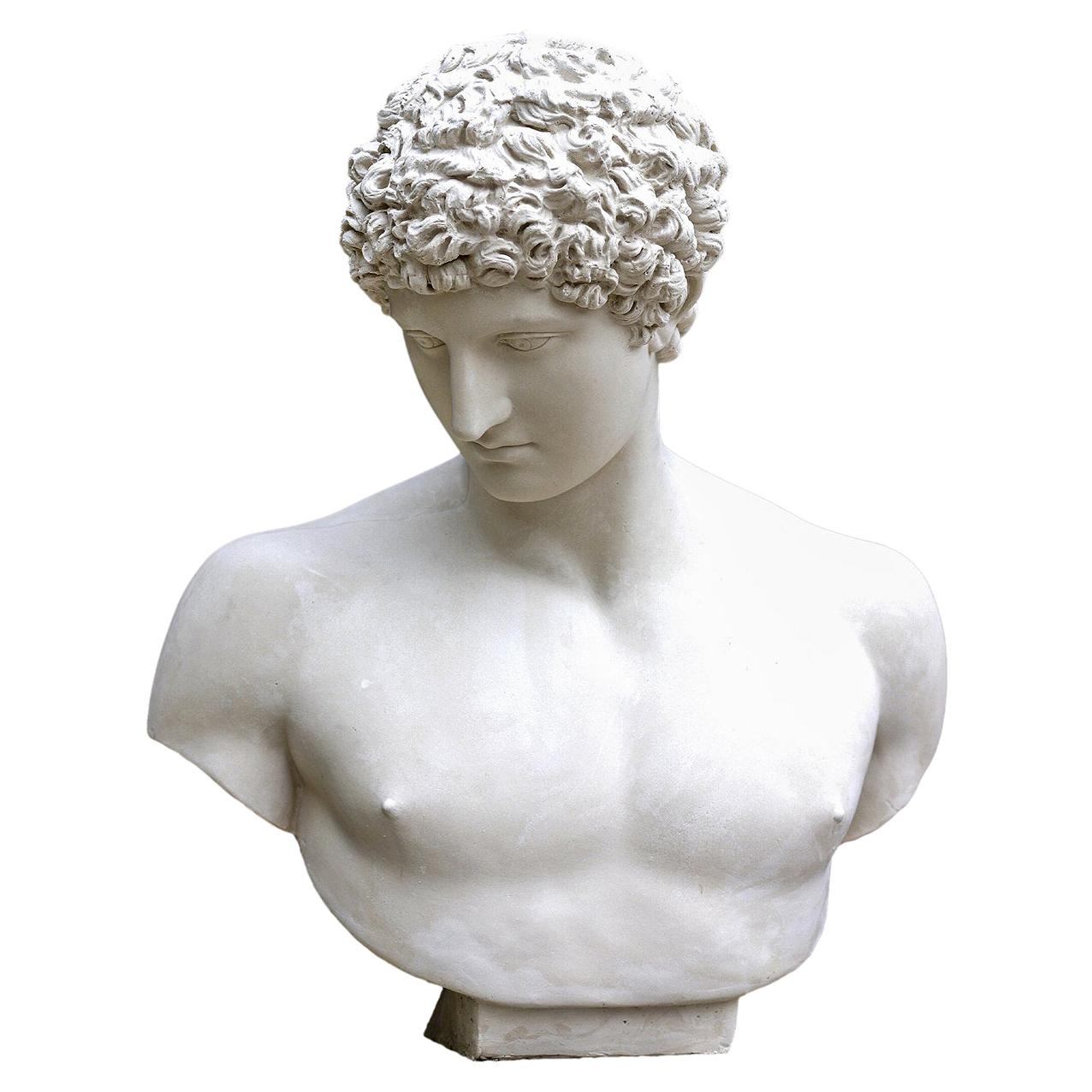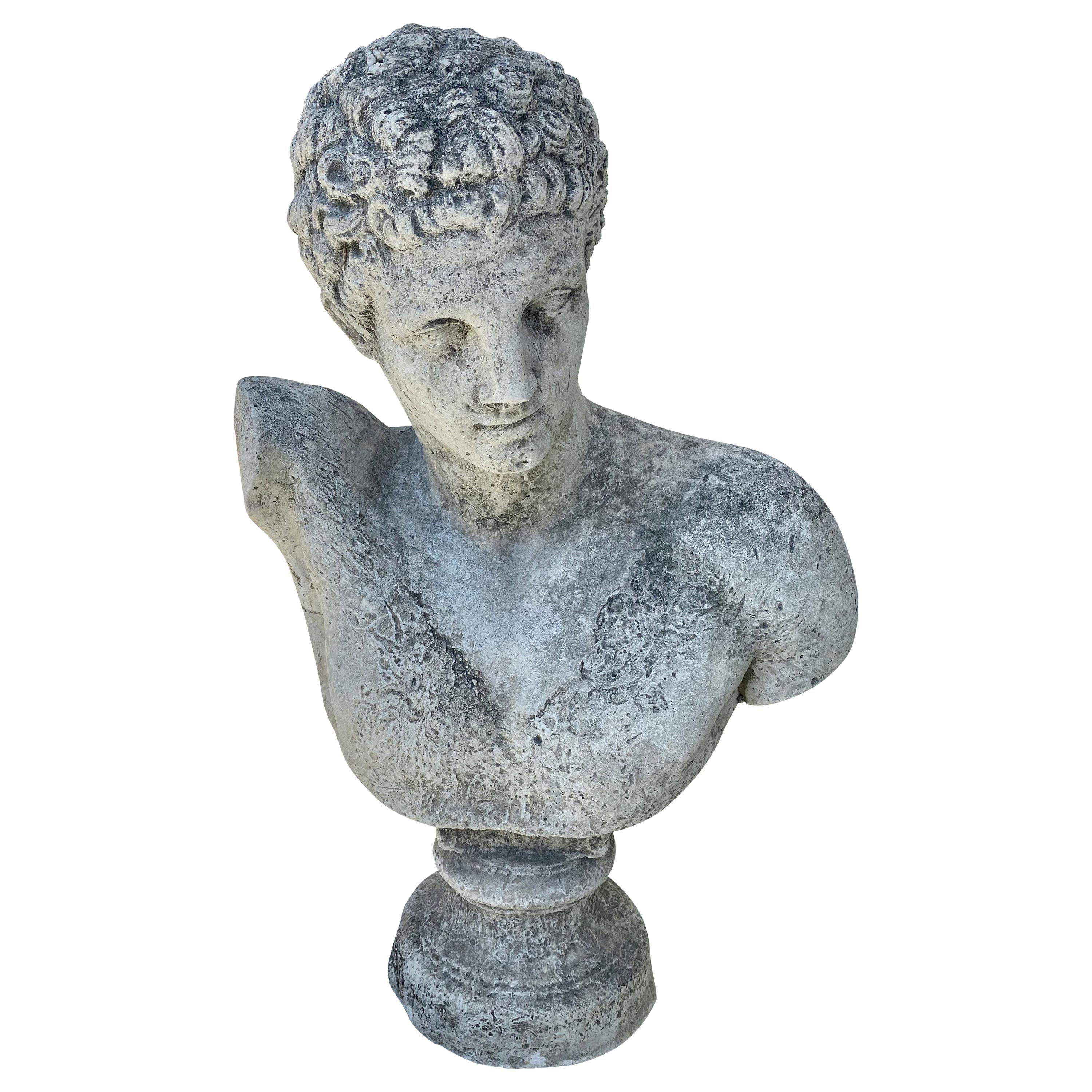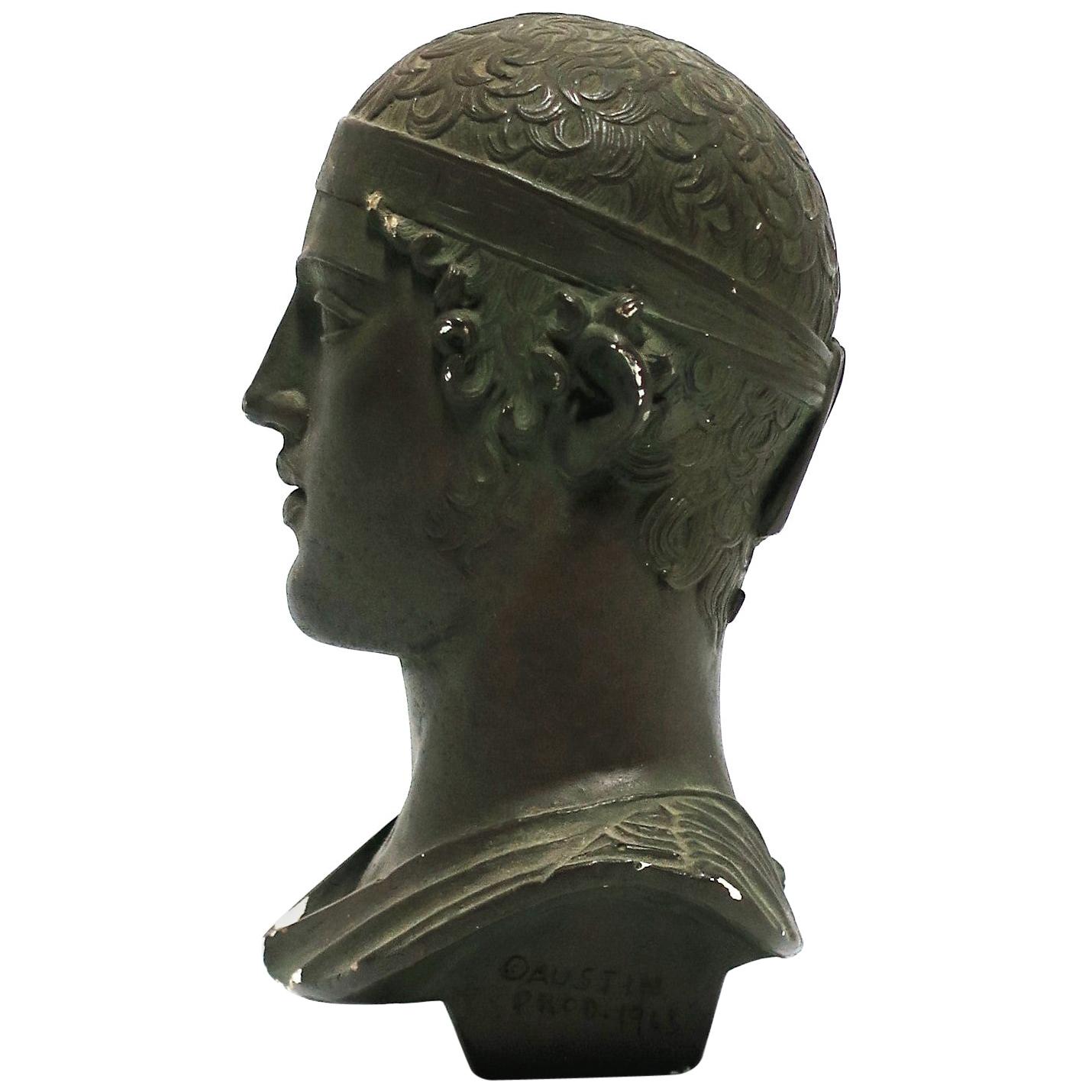Items Similar to Mounted Large Bust God of Beauty Cast Study Of Antinous in Roman Style Sculpture
Video Loading
Want more images or videos?
Request additional images or videos from the seller
1 of 22
Mounted Large Bust God of Beauty Cast Study Of Antinous in Roman Style Sculpture
About the Item
Mounted Large Bust God of Beauty Cast Study Of Antinous in Roman Style Sculpture. Imposing Large Cast Study Of Antinous in the Style Of Bust Found in Hadrian’s Villa in Vatican Museum. As well as The Bust in Via dei Fori Imperiali Rome. A Very Large Bust Standing at 3 Feet 2 Inches and Width of 2 Feet 5 Inches. A breathtaking Dark Patina over the Cast Study, that gives it an imposing old look as seen in the pictures. An outstanding piece to have in a living room a library , an office, an entryway , on top of a console , in an open bookcase. A great gift idea for a house warming, it will elevate your interior Design. It can go in a modern setting, or traditional design.
The most striking thing about the young man was his physical appearance. He was known for his great beauty, which was depicted numerous times by artists, often long after his death. The sculptures portray a young man with thick, curly hair and a full mouth. From his radiant countenance to his sculpted physique, Antinous personified the epitome of physical attractiveness and became an eternal symbol of timeless beauty. Based on the existing busts and other artistic portrayals, Antinous physical appearance was sometimes taken as a clue that the young man was not solely of Greek ancestry.
Hadrian seems to have favored men as sexual and romantic partners, and Antinous was his most famous favorite. Historians today agree that there was a sexual component to their relationship, a fact that was well-known in Roman times. Antinous was not the first male companion that Hadrian took in his life, and this sort of relationship was socially acceptable then.
Some of the busts that exist and were the reason studies such as our piece was made after, here are the Four : 1- Part of a statue of Antinous depicted as Apollo, 130-138 AD, from the Via dei Fori Imperiali Rome Centrale Montemartini, Rome. 2- Bust of Antinous, 130-138 AD, Galleria degli Uffizi, Florence Carole Raddato CC BY-SA. 3- Bust of Antinous, found at Hadrian’s Villa in 1790, Vatican Museums. 4- Portrait bust with head of Antinous. Found in Patras in 1856 along with bust no. 418. Dated a little after 130 AD. Inv. no. 417.
Antinous, son of Eupeithes , Greek: c. 111 – c. 130 was a young Greek man from Bithynia and a favorite and likely lover of the Roman emperor Hadrian. Following his death aged eighteen, Antinous was deified (made into a deity a God of the beauty ) on Hadrian's order s, being worshipped in both the Greek East and Latin West, sometimes as a god and sometimes as a hero.
Little is known of Antinous's life, although it is known that he was born in Claudio polis (present day Bolu, Turkey), in the Roman province of Bithynia. He was probably introduced to Hadrian in 123, before being taken to Italy for a higher education.
He had become the favorite of Hadrian by 128, when he was taken on a tour of the Roman Empire as part a group of people accompanying Hadrian. Antinous accompanied Hadrian when he attended the yearly Eleusinian Mysteries religious rites in Athens, and was with him when he killed the Marousian lion in Libya, an event highly publicized by the Emperor. In October 130, as they were part of a flotilla (group of small warships) going along the Nile, Antinous died amid mysterious circumstances. A number of suggestions have been put forward for how he died, ranging from an accidental drowning to an intentional human sacrifice or suicide.
After his death, Hadrian deified Antinous and founded an organized cult devoted to his worship that spread throughout the Roman Empire. Hadrian founded the city of Antinoöpolis close to Antinous's place of death, which became a cultic center for the worship of Osiris-Antinous. Hadrian also founded games in commemoration of Antinous to take place in both Antinoöpolis and Athens, with Antinous becoming a symbol of Hadrian's dreams of pan-Hellenism. The worship of Antinous proved to be one of the most enduring and popular of cults of deified humans in the Roman Empire, and events continued to be founded in his honor long after Hadrian's death. Antinous became a symbol of male homosexuality in Western culture, appearing in the work of Oscar Wilde and Fernando Pessoa.
H: 38” and Width 29” Depth 15” Base 11 x 11 Inches
- Dimensions:Height: 38 in (96.52 cm)Width: 29 in (73.66 cm)Depth: 15 in (38.1 cm)
- Style:Greco Roman (In the Style Of)
- Materials and Techniques:
- Place of Origin:
- Period:
- Date of Manufacture:20th
- Condition:Additions or alterations made to the original: on the interior shows an additional reinforcement to make it stronger. Overall good condition, some cracks , little losses to plaster . you are welcome to see it in person at La Maison francaise Antiques by appointment only, thank you. Wear consistent with age and use. Minor losses.
- Seller Location:West Hollywood, CA
- Reference Number:1stDibs: LU4400239453522
About the Seller
5.0
Gold Seller
These expertly vetted sellers are highly rated and consistently exceed customer expectations.
Established in 1965
1stDibs seller since 2019
132 sales on 1stDibs
Typical response time: 1 hour
- ShippingRetrieving quote...Ships From: West Hollywood, CA
- Return PolicyA return for this item may be initiated within 1 day of delivery.
More From This SellerView All
- Antique Mounted on Base Sculpture Cast Head Zeus Bust Decorative Bibelot CA LALocated in West Hollywood, CAAntique Mounted on Base Sculpture Cast Head Zeus Bust Decorative Bibelot CA LA . Bust inspired by Classic models . head mounted on a black base representing...Category
Early 20th Century European Busts
MaterialsPlaster, Wood
- 2nd Century Italian Stone Sculpture Roman Relief Aristocrat Mounted Antiques LALocated in West Hollywood, CA------ Short time sale on this important item -------- Large and rare 2nd century Italian hand carved stone sculpture Roman relief of an Aristocrat man mounted Antiques LA...Category
Antique 15th Century and Earlier Italian Wall-mounted Sculptures
MaterialsStone
- Model Nude Archer Mounted Sculpture Bust Bronze Stone Base Art Deco Antiques CALocated in West Hollywood, CAModel Nude Archer mounted sculpture bust bronze stone base Art Deco antiques CA. Excellent color and details decorative Sculpture on a desk as garniture on a mantle fireplace, on a s...Category
20th Century European Figurative Sculptures
MaterialsStone, Marble, Bronze
- Bust Pope Gilt Metal Bust on Hand Carved Wood Base Sculpture Antique Dealer LALocated in West Hollywood, CAAn amazing 19th century bust depicting figure of Pope of Rome Leo XIII composed of repoussé gilt metal (a technique in which the metal is beaten over hand car...Category
Antique Late 19th Century European Busts
MaterialsMetal
- 19th C. Pair Faience of Rouen Summer & Winter Garniture Bust Sculpture statue LALocated in West Hollywood, CA----------one week sale , Ends Monday ------ will not be extended A beautiful pair of 19th century Faience of Rouen Depicting Summer and Winter. This piece, commissioned in the mid ...Category
Antique 19th Century French Busts
MaterialsFaience, Paint
- Pair Bust Depicting Summer & Spring Sculptures Statues on Pedestals LA AntiquesBy Charles Henri Joseph Cordier 1Located in West Hollywood, CAPair Bust Depicting Summer & Spring Sculptures Statues on Pedestals LA Antiques . 19th century resin busts of ladies depicting summer and spring from Harrods Store, London. Made after the original pair by Charles Henri Joseph Cordier (1827-1905) in the Manner of Albert Ernest Carrier-belleuse Realized in Patinated and Gilded Bronze, the Drapery in Cashemire Onyx - Marbre and were sold at Christies for GBP 241,250 christies Decorative Arts Europe London 29 April 2010 Lot 100 The pair we have of tall busts two smiling females faces with hair gathered in a tight chignon, the forehead encircled with a flowered garland falling down on the shoulder mixed with wheat and fields flowers. Antiques Dealer Los Angeles CA Beverly hills West Hollywood Melrose ave La Cienega Blvd. Architectural Decorative...Category
Antique Late 19th Century European Belle Époque Figurative Sculptures
MaterialsResin, Wood
You May Also Like
- Bust of Antinous SculptureBy Raffaello RomanelliLocated in Milan, ITThis handmade work is a reproduction of a piece currently housed in the British Museum in London. The bust of the young, Ancient Greek hero Antinous is fa...Category
2010s Italian Busts
MaterialsPlaster
- Marble Bust of The Roman God JanusLocated in Southall, GBA detailed and beautifully carved marble bust of the Roman God Janus. The God of beginnings, endings, time, duality and boundaries, the openings of doorways, gates and passages. The two faces portray this duality. They are both expressively carved with different detail to the curled horns. The features are clearly carved in a expression of contemplation framed...Category
Antique Late 19th Century European Classical Roman Busts
MaterialsMarble
- Monumental French 19th Century Cast-Iron Bust of 'Head of Antinous as Dionysus'Located in Los Angeles, CAA Monumental French 19th Century Patinated and Parcel Gilt Cast-Iron Bust of 'Head from a Statue of Antinous as Dionysus' Wearing a Wreath of Ivy ...Category
Antique 19th Century French Greco Roman Busts
MaterialsIron
- Antinous Plaster BustBy Raffaello RomanelliLocated in Milan, ITThe elegant features of the young Antinous, a favorite of beloved Roman emperor Hadrian, are masterfully captured with exceptional richness in this plaster bust of the ancient Greek hero...Category
2010s Italian Busts
MaterialsPlaster
- Cast Concrete Bust of Greek God ‘Hermes’Located in West Hollywood, CACast concrete garden or indoor statue of bust depicting Greek God Hermès on fluted base.Category
20th Century Italian Busts
MaterialsConcrete
- Greek or Roman Head Bust Sculpture, 1965By Austin ProductionsLocated in New York, NYA Greco-Roman sculpture head or bust, England, 1965. A reproduction piece made of chalkware or plaster with a dark bronze-like finish. Marked on side as show in image #17. Vintage st...Category
Mid-20th Century English Greco Roman Busts
MaterialsStone
